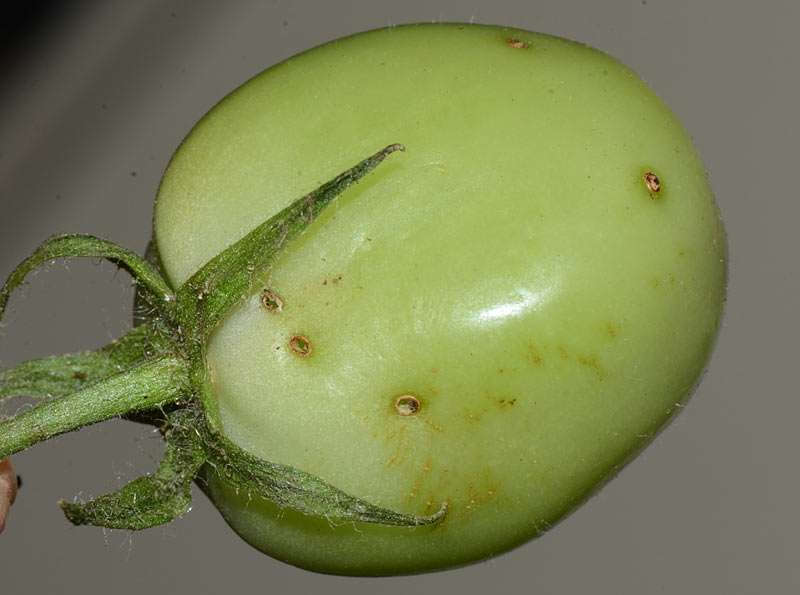
Advisory ArticleAgroStar Agronomy Centre of Excellence
Tomato Pinworm (Tuta Absoluta): Know its Symptoms and Management
Tuta absoluta prefers to feed on tomatoes, although other solanaceous plants, including potatoes, have been recorded as hosts. It is known to have many generations in a year and affects tomatoes at all growing stages.
Symptoms of damage
• Larvae mine in leaf mesophyll and make irregular papery mines.
• The larvae also infest apical buds and stems. In heavy infestation, both green and red fruits are attacked and infested fruits show small holes on the surface and larvae tunnel / mine below the surface.
• Pupation occurs in soil or on parts of plants such as leaves and stems. Adult moths are silvery brown with mottled wings.
Nesidiocoris tenuis (Reuter) (Hemiptera: Miridae), commonly found on tomatoes, is an effective predator of this pest Neochrysocharis formosa (Westwood) (Hymenoptera: Eulophidae), a common parasitoid of serpentine leaf miner of tomato in India and Southeast Asia, has been recorded as a parasitoid of T. absoluta as well.
Management:
• Collect and destroy the pinworm affected plants and fruits.
• Avoid solanaceous crops after tomatoes.
• Use healthy seedlings for transplanting keep pheromone traps @ 16 nos./ac to attract and kill the adult moths.
• Chlorantraniliprole 18.5% SC @ 60 ml or Cyantraniliprole 10% OD @ 60 ml or Flubendiamide 20% WG @ 60 gm or Indoxacarb 14.5% SC @ 100ml or Neem formulation (Azadirachtin 1% or 5%) @ 400 – 600 ml/acre.
Source: ICAR-National Bureau of Agricultural Insect Resources, Bengaluru
TNAU Agritech Portal
If you find this information useful, click on the yellow thumbs up sign under the photo and also share this with your farmer friends using the options given below.
485
1

